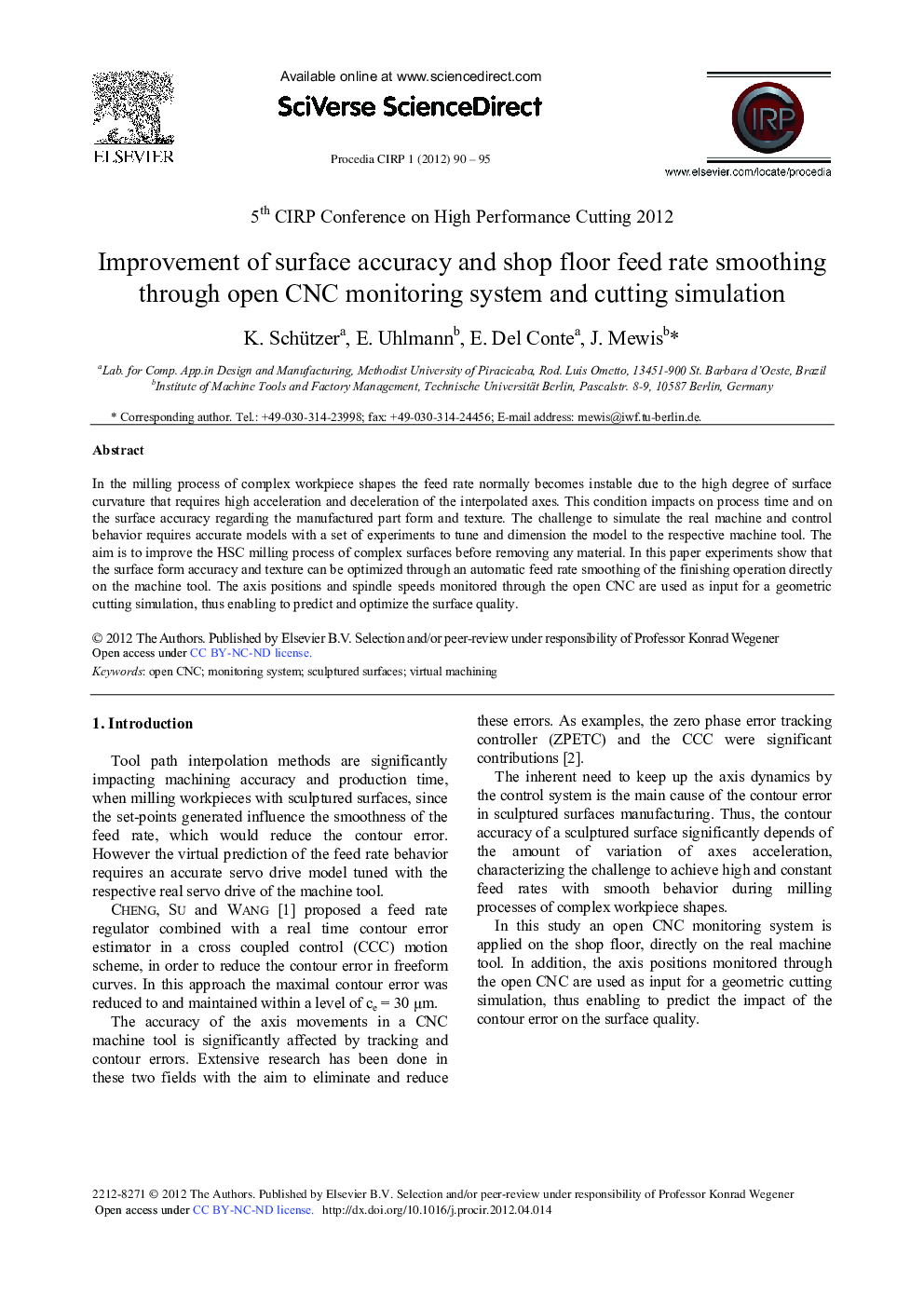| Article ID | Journal | Published Year | Pages | File Type |
|---|---|---|---|---|
| 1701479 | Procedia CIRP | 2012 | 6 Pages |
In the milling process of complex workpiece shapes the feed rate normally becomes instable due to the high degree of surface curvature that requires high acceleration and deceleration of the interpolated axes. This condition impacts on process time and on the surface accuracy regarding the manufactured part form and texture. The challenge to simulate the real machine and control behavior requires accurate models with a set of experiments to tune and dimension the model to the respective machine tool. The aim is to improve the HSC milling process of complex surfaces before removing any material. In this paper experiments show that the surface form accuracy and texture can be optimized through an automatic feed rate smoothing of the finishing operation directly on the machine tool. The axis positions and spindle speeds monitored through the open CNC are used as input for a geometric cutting simulation, thus enabling to predict and optimize the surface quality.
